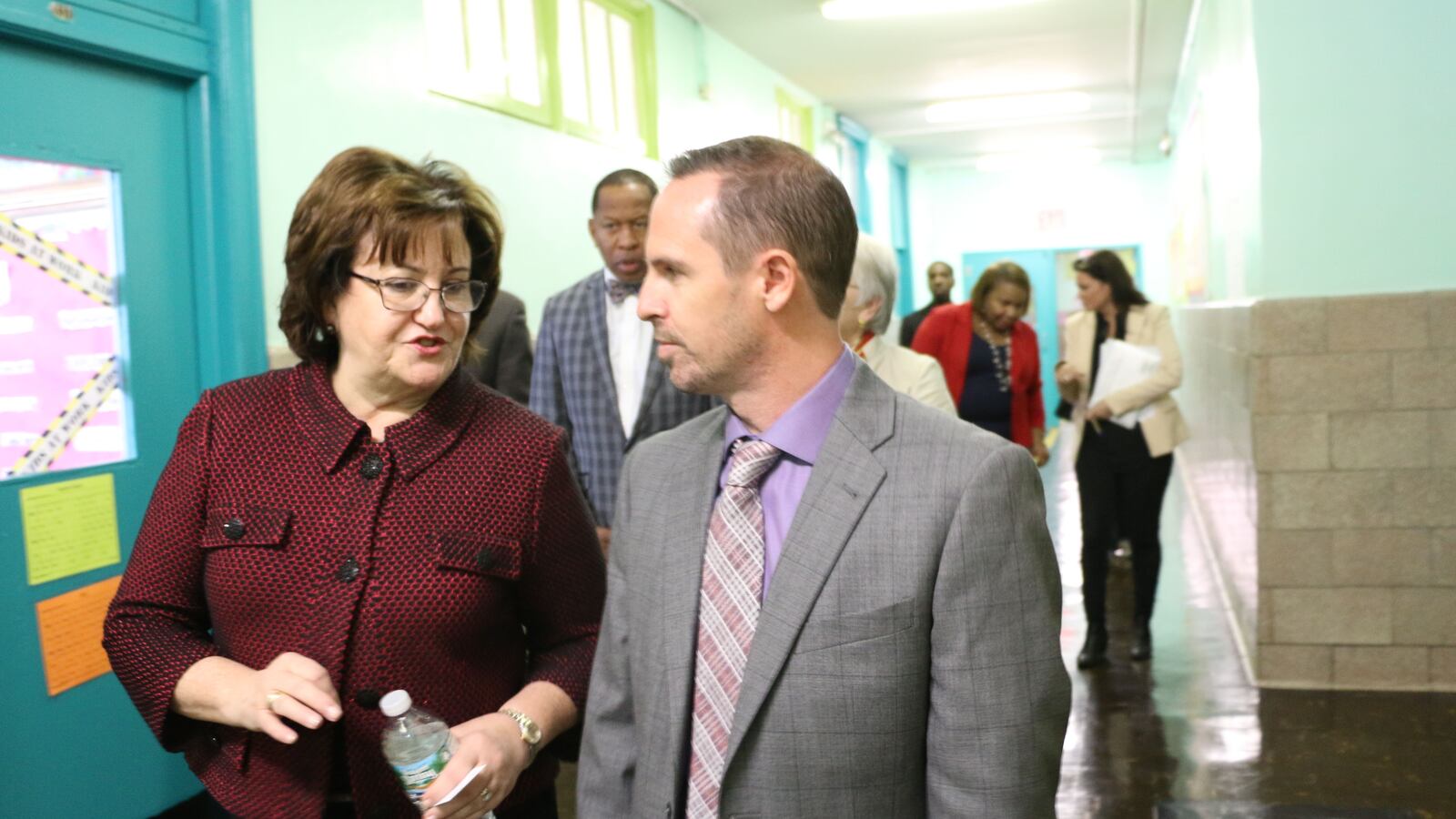New York released its much-anticipated draft of the state’s new math and English learning standards on Wednesday, which officials said are a major departure from Common Core.
More than half of the standards, which specify what skills and knowledge students should be able to demonstrate in each grade, were changed. That could mean anything from wording tweaks to replacing a standard altogether, said State Education Commissioner MaryEllen Elia. Some of the most significant changes involve early-grade English standards and a clarified set of expectations for Algebra I and II.
These standards are only a draft, but they offer the first glimpse into what will likely become the basis for a New York state education.
“It isn’t just tinkering around the edges and doing small, little things,” Elia said. “We had a very dedicated committee that met multiple times… [to] make sure that while they were still rigorous standards, that they were more clearly defined for our teachers across the state.”
New York was one of 45 states to adopt the Common Core standards, which were designed to improve college and career readiness. Last year, New York joined a nationwide trend and started backing away from Common Core after one in five students in the state opted out of state tests.
Governor Andrew Cuomo called for an overhaul of the standards in December, which he said led to “confusion and anxiety.”
Since then, the State Education Department has convened committees with a total of more than 130 teachers and other stakeholders to review and revise the math and English standards.
The state’s teachers union praised the changes, saying they are aligned to what students should be learning — and praised the review process.
“New York parents and educators, who worked with these standards every day, had a more meaningful voice in developing these new draft standards, and that represents an encouraging start,” said NYSUT Vice President Catalina Fortino. NYSUT leaders also pointed out that the process is far from over and the public comment period will be crucial to finalizing the standards.
Others were quick to argue that the standards had not changed very much at all. High Achievement New York, a coalition formed to support rigorous standards, sent a statement celebrating the fact that Common Core remains largely intact.
“Clarifying and simplifying language and combining standards is just common sense – enhancing the standards already in place and helping teachers better use these standards in the classroom,” said the leaders of High Achievement New York. “Most important, the vast majority of the standards … remain in place.”
Though many states have backed away from the official Common Core standards, often their replacement closely resembles the original standards. A New York state survey of each standard provided mainly supportive feedback, suggesting many educators and stakeholders did not want significant changes.
Elia explained that the changed standards were revised to varying degrees. Some were moved to new grade levels, others saw terminology adjustments or were clarified, and some were completely replaced with a “more relevant” standard. Elia said she could not say which type of change was most common.
She also said that while other states had fewer people offering input, or had to finish the revisions quickly, New York had a thorough review process. The extent to which New York state’s proposed standards represent a departure from Common Core will likely be analyzed by policymakers and researchers over the next several weeks and months.
Some of the most salient changes to English standards were centered around the early grades, state officials said. The new standards try to focus on the “whole child” and place an emphasis on learning through play. Officials are also convening a task force to take another look at the early education standards.
In math, the standards have been revised to clarify what students should learn in Algebra I and Algegra II. They also give students more time to develop “deep levels of understanding” for complicated algebra concepts. For both math and English, the state will create a glossary of terms to make sure educators are on the same page about what the standards mean.
Those changes are consistent with statewide survey results, which suggested that early-grade English standards should be more developmentally appropriate and higher-level math standards should be clarified.
In New York, the Common Core standards have also became part of a larger discussion about other policy reforms, such as the use of state standardized test scores in teacher evaluations. Replacing the standards is the first step in redefining what it means to get an education in New York state, which will include revising assessments, teacher evaluations and how the state rates schools.
The standards will now go out for public comment, which will be open until Nov. 4. The Board of Regents are expected to consider the standards in early 2017 and roll out new assessments based on the standards by the 2018-19 school year.
“One thing we don’t want to do is to rush this,” Elia said.

